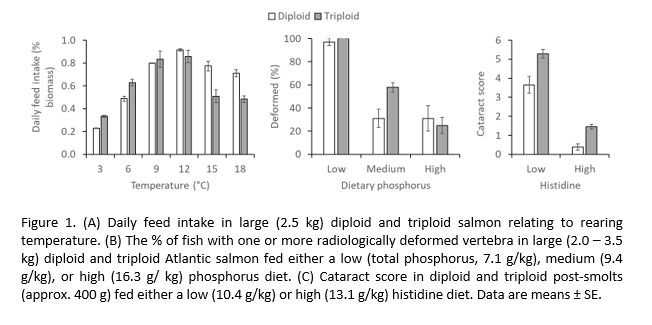A NORWEGIAN PERSPECTIVE ON THE SUITABILITY OF TRIPLOID ATLANTIC SALMON FOR AQUACULTURE
Preventing the interbreeding of wild and escaped farmed Atlantic salmon (Salmo salar) is an essential requirement of the Norwegian aquaculture industry if it is to be allowed to continue to expand. As such, the Institute of Marine Research (IMR) began to assess and develop production strategies back in the late 2000s to alleviate industry concerns surrounding the historic use of triploids, namely skeletal malformations and the development of cataracts. Subsequently, industrial green licenses were permitted for full scale trials throughout Norway starting in 2014. Here, we give a brief overview of the activity at IMR together with research and industrial partners in Norway as well as a summary of the main findings. For example, earlier laboratory studies found that compared to diploids, triploids have lower optimal rearing temperatures throughout the life-cycle whereas dietary requirements for phosphorus and histidine are higher in order to reduce issues with skeletal deformities and cataracts, respectively. During semi-commercial productions, triploid growth performance is generally equal to or better than diploids during freshwater rearing, but is more inconsistent in seawater with several large scale studies showing poor growth during seawater grow-out in comparison to diploids whereas other studies have shown equal or superior growth. For the industrial trials between 2014-2017, which includes data from 24 production groups of triploids, it was concluded that triploids showed promise as spring smolts, but less so as autumn smolts due to issues with wound development during the winter period. Analysis of the commercial trials post 2017 is ongoing, as well as work into smoltification and post smolt performance under different environmental conditions.
